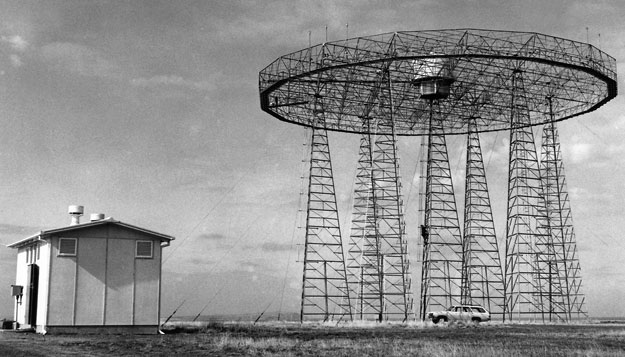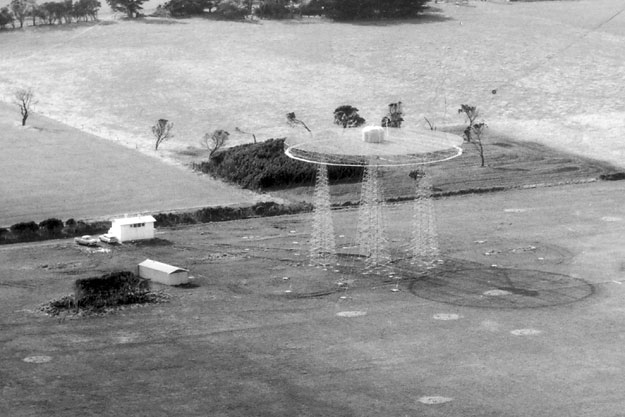
VAR beacons
were not simple to install. Despite the experience gained from many
installations, it usually took three months for a team of technicians,
linesmen, electricians and engineers to install and commission (that is,
bring into operational use following extensive flight testing) a VAR.
The beacons had a reputation for being difficult to set up. You certainly
could not connect it all together, switch it on and obtain
the correct results. Whatever adjustment was made impacted on something
else and numerous people spent fruitless hours trying one thing after
another in their endeavours to 'get it right'. Frank Partridge knew all
the angles, including how to cut and balance the antenna cables. Procedures
were established to ensure that all technicians followed the same procedure.
Everyone had to know what 'impedance' meant and be able to produce a specific
value of impedance in all sorts of places within a VAR installation.
Even with an Australian-developed, horizontally polarized aerial system, sufficient reflections still occurred to cause interference to the primary course signals and steps had to be taken to reduce them to a satisfactory level. The most effective (and expensive) method was to mount the antenna directly on the ground, at the centre of a flat area some 200 feet in diameter.
Perhaps the most spectacular installation was that at Cowes, on Phillip Island (Victoria), as shown in these photos. This VAR was required as an en route aid for the southbound airway between Melbourne and Tasmania. Because of problems associated with neighbouring rural buildings and farm implement movements close to the site, it was decided to use a large elevated structure rather than acquire extensive and costly land in the area. The aerial counterpoise (a disc providing a uniform 'ground plane') was 100 feet in diameter and 70 feet high. It had to withstand 100 mph winds and not deflect more than ±½°. It comprised six 70 foot Metters towers, supporting seven large interlocking tubular frameworks. It was constructed in early 1964 and became a well-known landmark in the area.

(Photos: CAHS collection)
Back to the main Communications & Navigation index